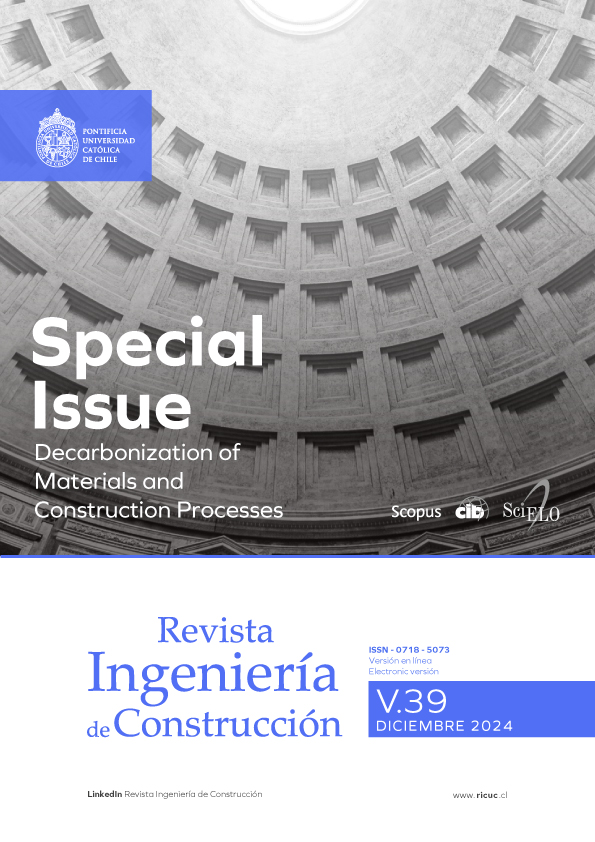The potential of using chilean biomass to develop insulating biocomposite material
DOI:
https://doi.org/10.7764/RIC.00128.21Keywords:
Greenhouse gas emissions, CO2, natural fibers, biocomposites, insulation materialsAbstract
The rise in greenhouse gas emissions, particularly CO2, has significantly contributed to global warming, with the residential and commercial building sectors playing a key role. Improving building energy efficiency through enhanced insulation is a crucial strategy for reducing CO2 emissions. However, conventional insulation materials have a high embodied carbon footprint, which limits their effectiveness in mitigating climate change. Biocomposites have emerged as an eco-friendly alternative to conventional materials. Countries like Chile, with their abundant agricultural fibers, show significant potential for fabricating biocomposites. This paper identifies the most produced fibers in Chile, including eucalyptus bark, wheat straw, rice husk, corn stalks, and walnut shells, and explores their potential use in the creation of sustainable biocomposite insulation materials.


